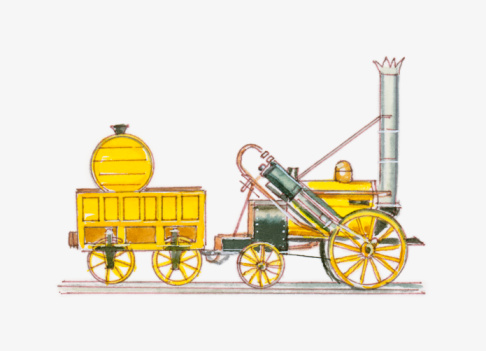

Printable PDF version
Subscribe to our newsletter
Rainhill Trials' 180th
Heavy &
Light Rail
Cal High Speed Rail
Light
at End of Tunnel
Construction Management Specialists
111 Pine Street, Suite 1315
San Francisco, CA 94111
(415) 981-9430
4361 35th Street
San Diego, CA 92104
(619) 550-1187
www.TBDconsultants.com
Rainhill Trials' 180th
Geoff
Canham, Editor
October will mark the 180th anniversary of the Rainhill Trials, a landmark event in the history of the railroad, so we have a Railroad Special with this edition of the newsletter.
The Rainhill Trials were arranged to see if locomotives could successfully pull trains on the Liverpool and Manchester Railway, or whether stationary steam engines should be used.
The winning entry of the trials was Stephenson’s Rocket, which is sometimes erroneously considered to be the first steam locomotive. In a number of ways the Rocket can be compared to the IBM PC, because although many personal computers preceded the IBM PC, it ended up establishing the path that led the technology into the future, and the same can be said for the Rocket in relation to the railroads.

There were five competition entrants in the trials:
The first was Cycloped, which was not a steam locomotive, but it used two horses walking on a belt (like a treadmill) to drive the wheels. It was withdrawn after part of it collapsed under a horse.
Perseverance was the inappropriate name of the second entrant, because it had been damaged in transit to the trials and was unable to achieve the required speed of ten miles per hour and had to be withdrawn. It did receive a consolation prize.
Sans Pareil was of somewhat similar design to the Rocket, but was older technology and considerably heavier, and was nearly disqualified for being overweight. It performed successfully until a cylinder cracked and it had to withdraw. Nevertheless it was purchased by the Liverpool & Manchester Railway.
The crowd’s favorite was Novelty, a light and fast locomotive with a design based on one used for a steam fire engine. Sadly, it suffered some damage to a boiler pipe and ended up being the last to withdraw.
That left the Rocket as the only locomotive to successfully complete the trials, averaging 12 mph and achieving 24.1 mph with a full load and 29 mph running light. Its builders, the Stephensons, were subsequently given the contract to build locomotives for the railway.
The Liverpool & Manchester opened for passenger and freight service in 1830 with trains running to a timetable and with proper stations and signals. It established the pattern for using steam locomotives with steel wheels on steel track, which continued for over a century until diesel and then electric locomotives took their place.
The railroads went on to open up vast areas of the world to commerce, including the continental United States. It also fueled the industrial revolution, allowing people to commute to work, and consequently industries tended to site themselves convenient to the railroad. To this day the bulk of goods are transported across land by the railroads.
The Rocket had one other claim to fame, or perhaps infamy: it was responsible for the first person killed on a public railroad, namely William Huskisson, MP, killed on the opening day of the Liverpool & Manchester Railway. But railroads have proved to be a safe way to travel, with statistics from the 1980’s showing railroads being twice as safe as buses, three times as safe as internal air traffic, and twenty four times as safe as cars and taxis.
Our cities have, and continue to be, shaped by light rail transit systems and heavy rail metro systems. Here we look at what the fundamental difference is between light and heavy rail systems.
High Speed Rail is coming to California at last! In this article we take a look at where we are in the project, and at what is planned.
Light
at the End of the Tunnel?
Ben Bernanke says, and we agree with him, that the recession is probably technically over. So can we heave a collective sigh of relief and expect the construction industry to recover as fast as it collapsed? We look back at the recession of the 1990's to see how that recovery progressed, to try and get a feel for how things might go this time.
Design consultant: Katie Levine of Vallance, Inc.